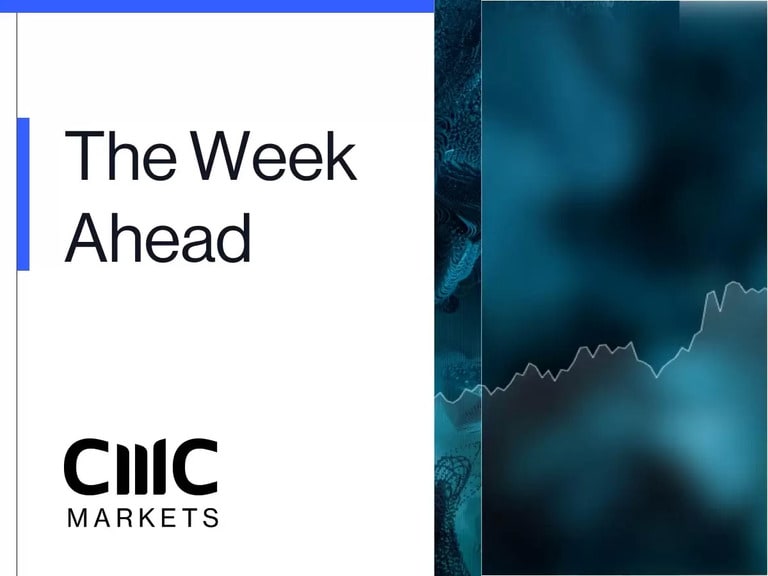Europe
Yields which had been higher, initially dropped back sharply as the multiyear highs seen in both the 30-year and the 10-year saw a sharp pullback.
This pullback in yields initially helped sustain a rebound in European markets, however this proved short-lived after the latest ISM services report for September reinforced a narrative of a resilient US economy.
The FTSE100 and FTSE250 have both underperformed, with the FTSE100 sliding to 3-week lows on the back of weakness in crude oil as well as metals prices, with copper prices sliding to their lowest levels this year, and Brent crude prices falling to one-month lows. BP and Shell are acting as a major drag, along with tobacco.
Imperial Brands and British American Tobacco have come under pressure on today’s announcement that the UK will raise the legal smoking age over time, although it can’t have been too much of a surprise to see it confirmed given recent briefings. There will also be restrictions on the purchase of vaping products to children, looking at flavours, packaging as well as disposability, meaning that the industry is likely to feel the pressure on both side of its business, on traditional as well as NGP revenue streams.
The defence sector is also feeling the heat on concerns over future US spending, after a commitment to spend another $6bn for future Ukraine aid was left out of the latest US government funding plan, with BAE Systems sliding to 5-week lows.
Balfour Beatty shares have also slipped back after the government confirmed the country’s worst kept secret that they were cancelling the Birmingham to Manchester leg of HS2, although the announcement was caveated by a pledge to look at improving east-west road and rail links across the Pennines.
On the plus side, Tesco is leading the way on the FTSE100 after uprating its full year guidance on profit and cashflow after a solid set of H1 results. The UK’s number 1 supermarket reported an 8.9% increase in total group sales to £30.75bn, as well as a 14% rise in adjusted operating profit of £1.48bn, comfortably beating forecasts of £1.42bn. Statutory profits for H1 after tax rose to £929m, a decent increase on last year’s £252m, though this number was impacted by a -£579m impairment charge which dragged the number lower.
The increase in profits has been driven by a laser-like focus on costs with the supermarket saying it remains on target to cut £600m of costs by year end. Tesco’s numbers are also helping to lift Sainsbury’s on the margin.
Elsewhere in retail, Superdry shares have jumped sharply after announcing a joint venture with Reliance Brands in India to enter the Indian and Sri Lankan markets which will see it receive £30.4m in gross proceeds.
US
US markets initially opened higher, with the S&P500 rebounding from its 200-day SMA, after the September ADP jobs report showed a slowdown in jobs growth to 89k, the lowest reading since January 2021, supporting the idea that the US labour market could be starting to display signs of cracks.
In contrast to yesterday’s reaction to the JOLTS report, yields have slipped back a touch, lending some support to stocks but the rebound appears unconvincing, losing some momentum after a positive ISM services report.
Alphabet owner Google shares are higher as it looks to launch its new Pixel 8 smartphone as well as a new Pixel 2 Watch.
Intel shares are higher after the chipmaker announced it would be separating its programmable solutions group (PGS) into a standalone business, from next January 1st, launching it as an IPO or to find an investor for it.
FX
The weakness in yields has prompted the US dollar to slip back from its recent highs, as the US bond market continues to drive currency movements.
The pound has rebounded a touch largely due to today’s pullback in the US dollar, however today’s services PMI numbers also showed that economic activity in September didn’t slow by anywhere near as much as had been feared, falling from 49.5 to 49.3, while the composite measure improved to 48.5 from 46.8.
This was a greater improvement than the one seen in the latest numbers out of Europe, which only improved on the margins.
The New Zealand dollar has shrugged off today’s decision to keep rates on hold and is slightly softer on the day. The Canadian dollar and Norwegian krone have slipped back on the back of today’s weakness in crude oil prices.
The US dollar has struggled for gains against the Japanese yen today, as traders bruised from yesterday’s sudden plunge sit on the sidelines, looking for further clues as to whether we’ll see intervention in the event we have another tilt at the 150.00 area.
Commodities
Concerns over the effects that higher rates could have on global economic activity has seen crude oil prices take a tumble, even as Russia and Saudi Arabia confirmed that they would continue recent output cuts into the end of the year. Today’s move lower has seen Brent prices slide to a one-month low bringing some respite after the gains of the past few months.
Gold prices, as well as other precious metals prices have continued to feel the pressure of rising yields, despite today’s softer than expected ADP payrolls numbers. Palladium prices have slipped to their lowest level in almost 5 years in the wake of a stronger US dollar, and concerns about a global slowdown in demand.
Volatility
Ongoing gains for US treasury yields continue to take a toll on global equities, with the Nikkei now having lost more than 5% since the start of the week. That has been sufficient to leave the index as one of the most active in the asset class, with one day vol coming in at 21.86% against 15.2% on the month.
Those treasury yields are boosting gains for the US Dollar too and that’s hitting commodity prices, most notably precious metals. The DXY Dollar index is hitting fresh year to date highs, something that is in turn weighing on Silver. One day vol here stands at 42.74% against 24.94% on the month.
Similarly, gold is under pressure and that’s playing out in terms of price action for CMC’s proprietary basket of gold mining stocks. Again, this cohort tested fresh year to date lows on Tuesday before staging a modest recovery. One day vol printed 61.8% against 35.38% for the month.
And in fiat currencies, the Yen surged on Tuesday amidst speculation that the Bank of Japan had intervened. Whilst the initial reaction was somewhat overblown, net gains were seen on the day. One day vol on Dollar-Yen stood at 13.54% against 6.47% on the month.
Disclaimer: CMC Markets is an execution-only service provider. The material (whether or not it states any opinions) is for general information purposes only, and does not take into account your personal circumstances or objectives. Nothing in this material is (or should be considered to be) financial, investment or other advice on which reliance should be placed. No opinion given in the material constitutes a recommendation by CMC Markets or the author that any particular investment, security, transaction or investment strategy is suitable for any specific person. The material has not been prepared in accordance with legal requirements designed to promote the independence of investment research. Although we are not specifically prevented from dealing before providing this material, we do not seek to take advantage of the material prior to its dissemination.






